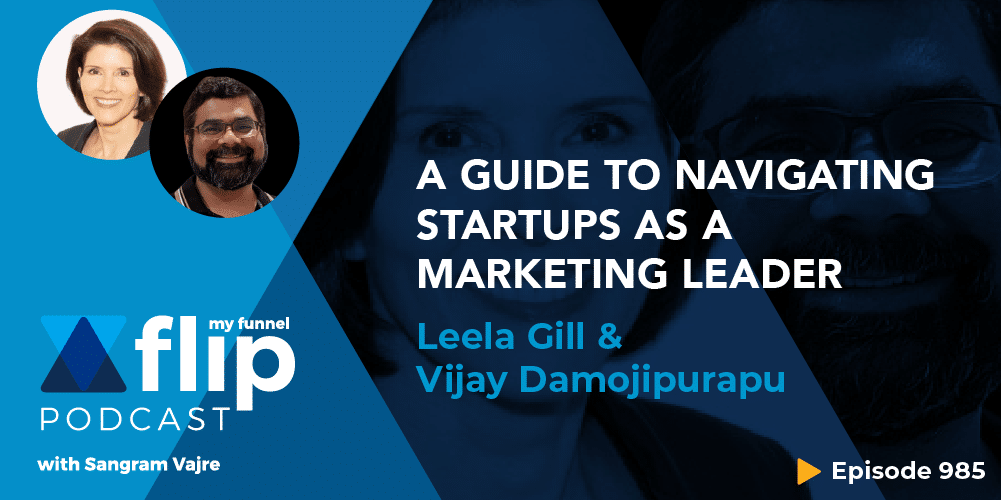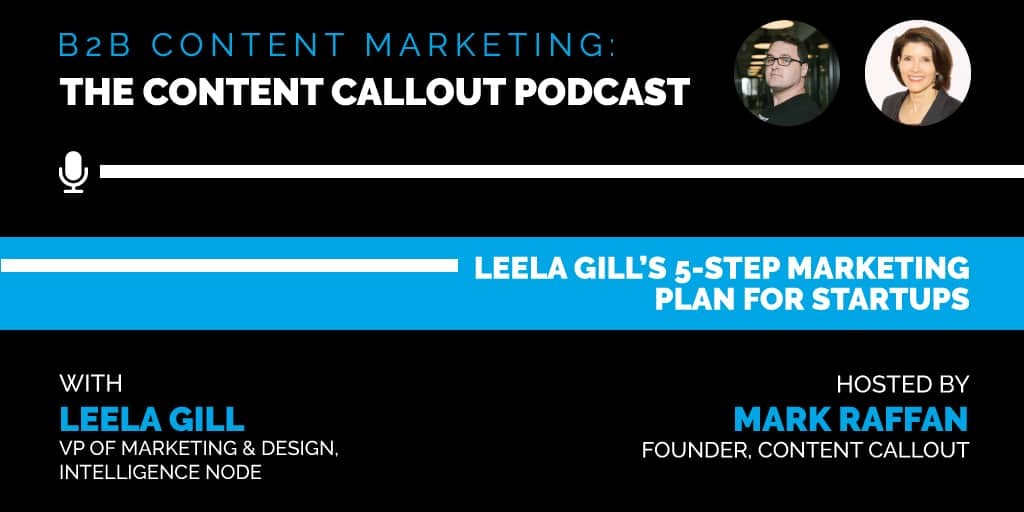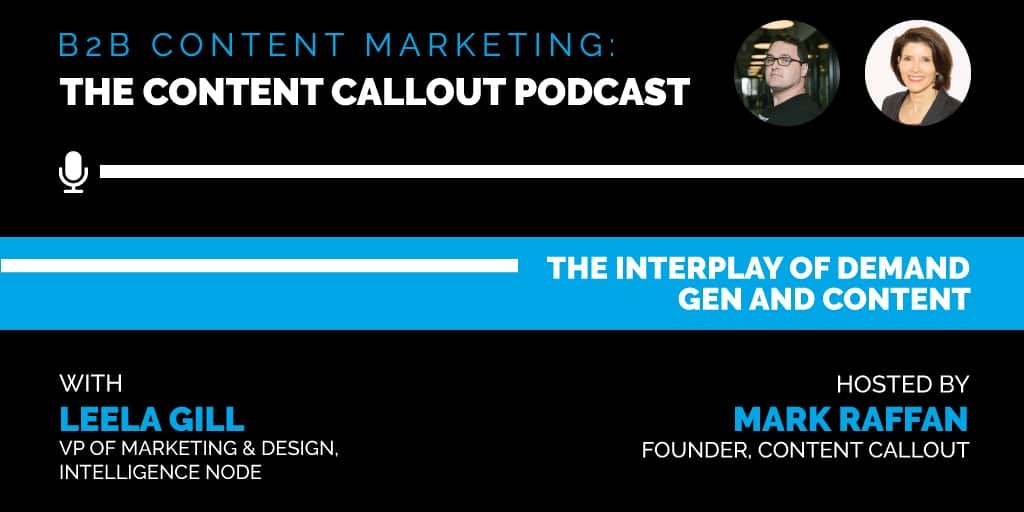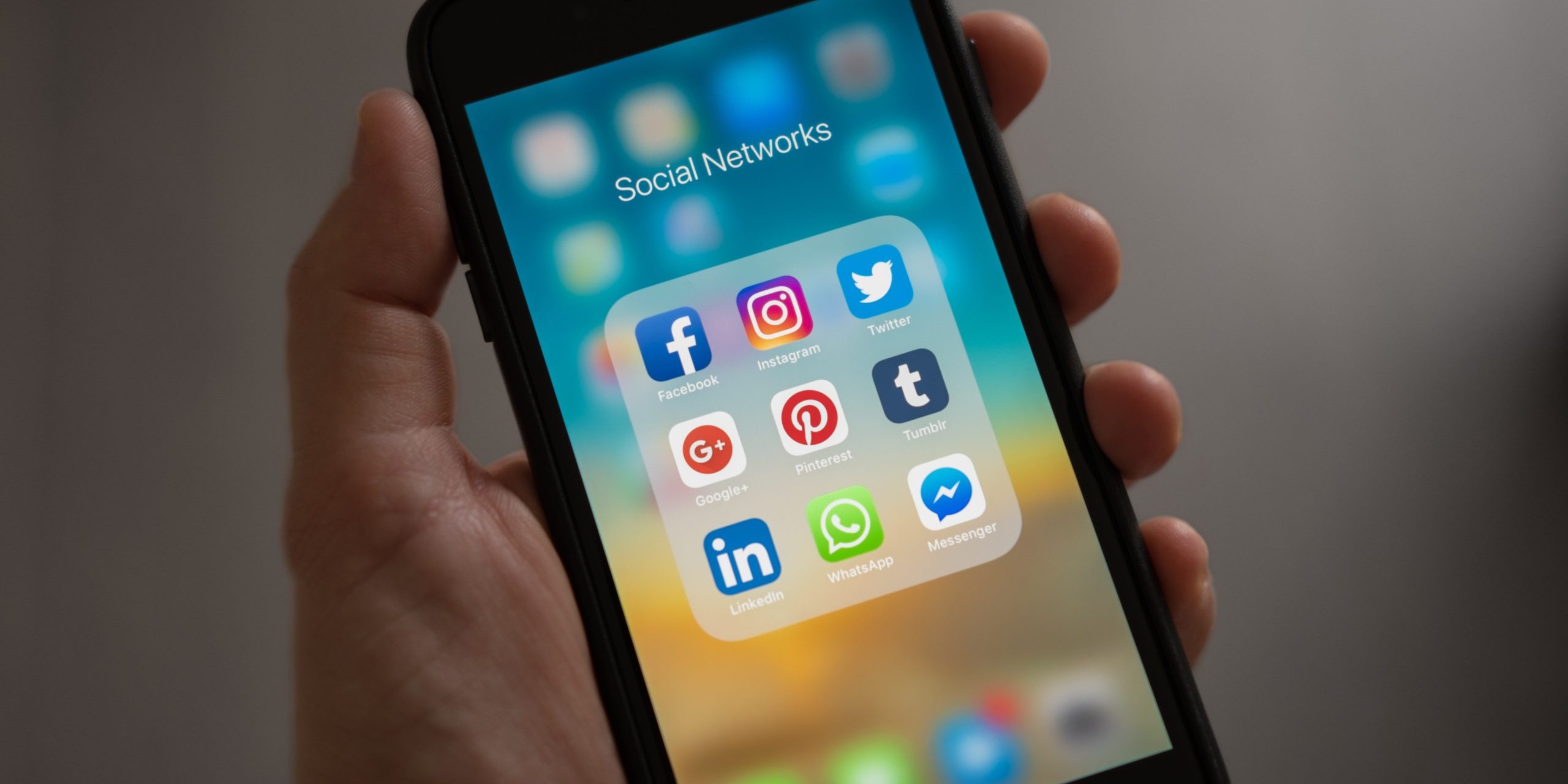Building A Diverse And Equitable Business: The Role Of Marketing
Jesse Jackson once said, “Inclusion is not a matter of political correctness. It is the key to growth.”
This is more evident now than ever before. There is no question for me that prioritizing diversity, equity and inclusion (DEI) in companies of every size and in every industry comes with a renewed sense of urgency in the United States today.
When you think about which department within an organization should be most focused on prioritizing DEI, human resources may come to mind. However, diversity isn’t just an internal HR matter; marketers have an opportunity and a responsibility to put diversity at the forefront of their thinking when they’re hiring colleagues, creating content and planning campaigns.
Why marketing?
Marketers have access to communications and media that can change DEI from an initiative to an integral part of a company’s culture and its brand. It is marketers who translate corporate strategy and brand concepts into the words, images and messages the company uses both internally and externally. Simply put, marketers are change agents. And putting DEI at the forefront of our marketing campaigns is a responsibility we should own.
DEI can help grow the business and build loyalty.
In an August 2020 report on the retail and consumer goods markets, McKinsey points out that consumers are showing a preference for brands and retailers they trust and that it’s important for companies to demonstrate social responsibility. Consumers are changing their attitudes about where to buy and voting with their wallets: According to a 2019 survey from Markstein and Certus Insights (via Businesswire), “46% [of consumers] pay close attention to a brand’s social responsibility efforts when they buy a product.” Those companies that put words into action to address DEI will likely be rewarded.
Forward-thinking companies like Verizon understand this shift. In April 2021, Verizon announced that it is rolling out a new set of goals around how it approaches DEI in all aspects of its marketing operations, including a commitment to spend 30% of its budget on “diverse-owned video, experiential and print production firms” and other initiatives that take into account an industry-wide gender equality measure. According to Verizon CMO Diego Scotti, “Corporate social responsibility isn’t the thing you do on the side in terms of philanthropy — you must move it to be central to your strategy.”
The bottom line is that if our audience sees themselves reflected in our company’s marketing campaigns, they will take notice. And, in today’s environment where getting above the noise is difficult, taking an authentic approach to diversity and equity can help you garner the attention your brand needs to build a loyal following.
How diverse is your marketing team?
Marketers are the company’s experts in language, imagery and prose. Marketers know how to apply these communication techniques to best serve the company’s employees, prospects and customers. How can we ensure that those featured in these critical marketing assets are properly represented? First, take a step back and ask yourself if your team accurately mirrors the diversity initiatives you are seeking to prioritize. No matter how empathetic and open-minded the people on your marketing team may be, a less diverse team can be a silent barrier to inclusive marketing. Aim to build a team composed of colleagues who come from diverse backgrounds. This action can help your stories resonate with your employees, prospects and customers.
According to a recent Glassdoor survey, job seekers and employees want employers to step up their transparency around DEI. If employers don’t, they may miss out on retaining top talent. About one in three employees and job seekers (32%) would not apply to a job at a company that lacks a diverse workforce. If you haven’t been thinking about this already, now is the perfect time to modernize your team’s hiring strategy and include DEI as a priority. If you need further incentive, McKinsey explains “that diverse teams are more innovative — stronger at anticipating shifts in consumer needs and consumption patterns.” This dynamic could translate into a real competitive advantage.
Is your content diverse, and does it reflect those you seek to engage?
Just like Rome wasn’t built in a day, an inclusive brand marketing program often takes significant time and effort. The first step is understanding just how well your marketing efforts reflect your brand. Take a look at your customer-facing campaigns and programs. Who are the faces behind your marketing content? Your products may be for everyone, but if your images and videos lack racial and age diversity, they may not resonate with employees, prospects and customers. After all, the goal of your content should be to create an emotional connection with your audience.
Next, look at the tone of voice and words you are using in your writing. Make sure the language you’re using will resonate with your target audience, and be careful when using jargon and slang. When you’re thinking about storytelling, be intentional about using diverse perspectives.
Some marketing professionals are making progress on these initiatives, but for others, there is a long way to go before inclusive and diverse marketing becomes the norm. As company leaders, we have a responsibility to help ensure that DEI is part of our conversations and implemented in our campaigns. And we can take on the role of helping the CEO recognize the importance of DEI for growing the business.
It’s important to check yourself.
Ask yourself, “As a marketing leader, do I know what our company’s DEI goals are? Am I leading in a way that prioritizes DEI?”
If not, take action. Consider inviting DEI representatives to team meetings when you’re planning or refreshing campaigns. Open up the dialog and be bold about talking about this priority with your team. With your CEO, find examples of how you are bringing DEI to life within the company and garner support.
I believe we will see progress as more marketing leaders embrace their responsibility in prioritizing DEI and, specifically, take actionable steps to align the internal values of the company with the external brand messaging. Marketers are change agents. And we have the power to lead a DEI transformation.
Related Posts:
Influencers, Brand Ambassadors and Raving Fans – and Why You Need All Three
For marketers, influencers, brand ambassadors, and raving fans can create a significant differentiator…
Marketing as a Revenue Generator and Catalyst for Change
Marketing is a change catalyst, calling customers to change and jump on, and it also helps the organization…
A Guide To Navigating Startups as a Marketing Leader
It can’t be understated: Being a marketing leader of a startup can be crazy and chaotic. Out of the million…
A 5-Step Marketing Plan for Startups
As a marketing professional working in a startup, do you know how to help your company grow revenue? How is…
Building A Diverse And Equitable Business: The Role Of Marketing
Jesse Jackson once said, “Inclusion is not a matter of political correctness. It is the key to growth.” This…
B2B Marketing: What We Can Do To Help Save The Planet
The COVID-19 pandemic is the biggest business challenge of a generation. Organizations scramble to establish…
The Interplay of Demand Gen and Content with Leela Gill
The COVID-19 pandemic is the biggest business challenge of a generation. Organizations scramble to establish…
Early-Stage Marketing: A Five-Point Leadership Framework
The COVID-19 pandemic is the biggest business challenge of a generation. Organizations scramble to establish…
Social Media: Getting Above the Noise
The COVID-19 pandemic is the biggest business challenge of a generation. Organizations scramble to establish…
B2B Marketing: What We Can Do To Help Save The Planet
As B2B marketing leaders, we have a lot riding on our shoulders: Listening to customer needs, accelerating business growth, driving product innovation and, now, driving social and environmental awareness. In the wake of 2020, one of the most disruptive social and environmental years in our recent history, we know it’s not just about growing revenue; it’s about growing our businesses responsibly.
Recently, to my surprise, I received a heavy 2x3x2 foot box at my doorstep as part of a direct mail marketing campaign. As I opened the box and pulled out layers of plastic and bubble wrap, I wasn’t just thinking about the gift, I was thinking about the cost to the environment. I unveiled my gift to find a six-pack of beer with an accompanying 10-page analyst report. Not being a beer drinker, I laughed at first. Then I started thinking, what is the role of marketing when it comes to helping save the planet?
Let’s start with some statistics. Did you know that only about 32% of America recycles, down from 34.7% in 2015? Or that Americans can generate as much as 1,800 pounds of landfill per person per year? With a population of more than 331 million, just think about that number for a minute.
Over two-thirds of U.S. consumers say it’s important for companies to reduce their impact on the environment, with the percentage jumping to 83% for Millennials ages 21 to 34. With 44% of Millennials acting as the primary decision-makers in today’s buying economy, it’s crucial for marketing teams to demonstrate alignment on these issues. In fact, 83% of Millennials want companies to align with their values, which should speak volumes to marketing leaders.
We have hit a tipping point when it comes to the environment. And yet, we are still not acting fast enough. Marketers play a key role in making sure the right decisions are made for their company. So, as marketing leaders in the richest economy in the world, here are a few small ways we can help save the planet:
1. Eliminate the plastic swag and limited-use accessories.
2020 was a wash for in-person events, but as cities continue to fully reopen and people start to become more comfortable traveling and gathering, in-person events and conferences are coming back.
According to Northstar Meeting Group data from May, 82% of planners surveyed expect to hold live events this year. Much has changed this past year, and it’s time for marketers to rethink their swag strategy at these events. Cheap branded tote bags, t-shirts and pens are generally ineffective, overused ways to increase brand awareness, as they tend to not be used after the event and eventually end up in the trash.
It’s time for marketers to transform their strategy at conferences. Studies have shown that more and more people value experiences over things, so why not offer a unique experience that will result in a positive association for your brand? Consider hiring a photographer to take attendees’ headshots at the conference, hiring massage therapists to give free chairs massages or even giving away coupons to support a local restaurant in the area (that has undoubtedly struggled this past year).
Another idea is to have a spinning wheel at your booth with a number of prizes that involve experiences (or if you’re branding something, consider high-end chocolate or coffee). I promise more people will be at your booth than the one next door that’s offering branded t-shirts and pens.
2. Choose alternatives to shipping cardboard boxes and plastic wrap.
As climate change and the impacts of consumer behavior sink in, people are paying attention to what companies are doing to reduce their environmental footprint. That starts with the marketing team’s decisions.
Five years ago, a six-pack of beer might have been positively received, but nowadays, even if the recipient likes beer, they may not see past the plastic and the cost of sending something through the mail that they could have purchased at the grocery store three blocks away. Next time, consider sending them a redeemable coupon for that six-pack instead. You could even think beyond the alcohol and offer gift cards, non-profit donations in their name, food donations, tree plantings or a handwritten note.
3. Guide recipients on how to dispose of shipping materials.
The language you use to communicate how to recycle is critical and has come a long way over the past two decades. According to recent data, “organic” was used in less than 2% of all mail from 2000 to 2004, but is now used in nearly 38% of all mail pieces. “Sustainable” went from 1.64% in the early 2000s to over 36% between 2017 and 2021. And “please recycle” grew the most, from 0.31% between 2000 and 2004 to nearly 60% today.
If you are set on sending out direct mail, make sure you guide your recipients on the best way to dispose of the packaging. And remember, just over one-third of America is recycling today, so this should be the last resort. It’s better for the environment to eliminate the shipping costs in the first place.
We can help save the planet.
When thinking about your marketing campaigns, especially direct mail and events, ask yourself: How can I accomplish my goals in the most environmentally responsible way? Then, take real action. A famous Chinese proverb says, “The best time to plant a tree was 20 years ago. The second best time is now.” In the same vein, there’s no better time than right now for marketing leaders to show up for their company, consumers and the environment.
Related Posts:
Influencers, Brand Ambassadors and Raving Fans – and Why You Need All Three
For marketers, influencers, brand ambassadors, and raving fans can create a significant differentiator…
Marketing as a Revenue Generator and Catalyst for Change
Marketing is a change catalyst, calling customers to change and jump on, and it also helps the organization…
A Guide To Navigating Startups as a Marketing Leader
It can’t be understated: Being a marketing leader of a startup can be crazy and chaotic. Out of the million…
A 5-Step Marketing Plan for Startups
As a marketing professional working in a startup, do you know how to help your company grow revenue? How is…
Building A Diverse And Equitable Business: The Role Of Marketing
Jesse Jackson once said, “Inclusion is not a matter of political correctness. It is the key to growth.” This…
B2B Marketing: What We Can Do To Help Save The Planet
The COVID-19 pandemic is the biggest business challenge of a generation. Organizations scramble to establish…
The Interplay of Demand Gen and Content with Leela Gill
The COVID-19 pandemic is the biggest business challenge of a generation. Organizations scramble to establish…
Early-Stage Marketing: A Five-Point Leadership Framework
The COVID-19 pandemic is the biggest business challenge of a generation. Organizations scramble to establish…
Social Media: Getting Above the Noise
The COVID-19 pandemic is the biggest business challenge of a generation. Organizations scramble to establish…
Google Killed The Cookie: An Opportunity For Marketers
In January, Google announced it would phase out third-party cookies in Chrome by 2022. The company follows the path of Apple and Mozilla, which already block third-party cookies in their browsers by default.
This comes on the heels of new privacy rules like GDPR and the California Consumer Privacy Act (January 2020). Google says it’s listening to users, who are increasingly wary about being tracked when they search, shop or browse online. The move also stands to benefit Google by allowing the company to keep more advertising eyeballs and dollars for itself.
B2B marketers, we’re on notice.
This change disrupts a multibillion-dollar display advertising and account-based marketing (ABM) industry. Marketers have gotten into the habit of relying on algorithms to puzzle together profiles. Using cookies to track users online, we collect data to forecast buying behavior and strategically pursue customers. But the fundamental business of marketing is to really know our customers — their pain points, problems, desires, goals and aspirations.
Once the cookies are gone, we will have to return to our roots, meeting people face to face, listening to them and talking to them. Marketers will have to stop stalking prospects and start accompanying them along the buyer journey. That means generating first-party data and crafting targeted responses to what we learn from that data.
Ensure you have a solid first-party data strategy.
• Understand your ideal customer profile and personas. Conduct good old-fashioned personal interviews. Ask senior leaders in your customer industries what their goals and challenges are, where they get their information and how their companies decide on strategic departmental programs. While third-party cookies are still active, study behaviors behind the “intent data” (the data that attempts to divine what web visitors want to do). Let that help you formulate the right questions to ask and ideas to explore.
Develop a high-performance inbound strategy. Root your inbound strategy in high-quality, value-added content that you know your personas will consume. Find opportunities to engage in thought leadership through speaking, writing and video. Author authentic, expert pieces that educate and guide readers through the buying process. You can post this content on LinkedIn or your website and publish it in industry publications or anywhere your prospects are reading. If you give them something worth sharing, readers act as your ambassadors.
• Complement inbound with a strategic outbound marketing program. Go to them. Present at conferences your customers attend. Gather contact information, and add value to their inboxes (or even their mailboxes). Take a strategic approach to making connections on LinkedIn. When you know your customers, you can customize webinars and other educational programs that foster engagement.
• Rethink your sales approach. The sales and marketing processes increasingly intersect, so strong alignment with sales is necessary. Salespeople get direct feedback from clients. They can provide specific insights into the unique relationships between customers and your company’s people, products and solutions. Marketing, in turn, can enable sales by acting as a liaison with the rest of the company, translating sales data to research and development teams and communicating the implications of product road maps to sales.
Adapt your advertising approach.
After retooling to generate first-party data and combining it with cleaned-up customer relationship management (CRM) data, marketers will need to revert to contextual ad targeting instead of cookie-based behavioral ad targeting. Keyword-based advertising was considered old-school five years ago, but Google is determined to drive us back to the basics. Without the cookies, your ads will be driven based on user keyword search, not on what websites your prospects have visited in the last week.
Beyond contextual ad targeting, we need to use tools like Facebook and LinkedIn to do more people-based advertising, which is why understanding the demographics of your buyer personas is important.
Finally, remember that not all third-party data relies on cookies. Device-centered tracking (including through mobile apps) offers simpler, more transparent ways for users to give advertisers permission or opt out. Social platforms still play a big role by giving marketers access to their immense stores of advanced first-party data.
The core challenge of marketing hasn’t changed.
We need to find a way to join the deep conversations our customers are having in their businesses. The demise of the third-party cookie demands that we participate by doing more than just pumping up the volume of views.
So, how do we scale all this direct human contact? That’s a question on everyone’s mind. Face-to-face, one-to-one and customized connections are expensive. But so are tech stacks designed to chase cookies like Pac Man, when cookies are bound for obsolescence. So, consider shifting your investment. Try simplifying your marketing tech stack and reinvesting in your first-party data strategy instead.
Reverting to the basics could be a good thing for us all. It might just force us to revive the core capacity at the heart of the marketing profession: building real relationships with our customers.
Related Posts:
Influencers, Brand Ambassadors and Raving Fans – and Why You Need All Three
For marketers, influencers, brand ambassadors, and raving fans can create a significant differentiator…
Marketing as a Revenue Generator and Catalyst for Change
Marketing is a change catalyst, calling customers to change and jump on, and it also helps the organization…
A Guide To Navigating Startups as a Marketing Leader
It can’t be understated: Being a marketing leader of a startup can be crazy and chaotic. Out of the million…
A 5-Step Marketing Plan for Startups
As a marketing professional working in a startup, do you know how to help your company grow revenue? How is…
Building A Diverse And Equitable Business: The Role Of Marketing
Jesse Jackson once said, “Inclusion is not a matter of political correctness. It is the key to growth.” This…
B2B Marketing: What We Can Do To Help Save The Planet
The COVID-19 pandemic is the biggest business challenge of a generation. Organizations scramble to establish…
The Interplay of Demand Gen and Content with Leela Gill
The COVID-19 pandemic is the biggest business challenge of a generation. Organizations scramble to establish…
Early-Stage Marketing: A Five-Point Leadership Framework
The COVID-19 pandemic is the biggest business challenge of a generation. Organizations scramble to establish…
Social Media: Getting Above the Noise
The COVID-19 pandemic is the biggest business challenge of a generation. Organizations scramble to establish…
39 Sales Email Subject Lines That Get Opened, Read, and Responded To
4 MIN READ
Want better email open rates? The trick is writing excellent marketing email subject lines.
This helpful blog post by Emma Brudner of HubSpot has great ideas for email subject lines that get noticed. Emma is 100% right when she writes that “the best email subject lines are creative, compelling, and informative without giving too much away.”
However, in my industry, I have found that cold emails – regardless of the creative subject line – rarely work so make sure you know something about the person you are going to email. Research how active they are on LinkedIn, when did they start their current position, see if they are commenting on articles, check for a twitter account, and see if you can figure our which sports teams or industry guru they may like to follow. Then when you do get a conversation, you personalize your conversation about that team or business leader!
Here are some of my favorites email subject line starters:
- “Hi [name], [question]?”
- “We have [insert person or fact] in common …”
- “Idea for [topic the prospect cares about]”
- “I found you through [referral name]”
- “Following up on your [comment they made on LinkedIn]”
- “Wanted to get your ideas on [topic].”
Make sure to read Emma’s full blog post. It is a quick read and she links to some sales email templates in her post as well.
#marketing #digitalmarketing #online marketing #advertising #entrepreneur #business #growth
Related Posts:
Influencers, Brand Ambassadors and Raving Fans – and Why You Need All Three
For marketers, influencers, brand ambassadors, and raving fans can create a significant differentiator…
Marketing as a Revenue Generator and Catalyst for Change
Marketing is a change catalyst, calling customers to change and jump on, and it also helps the organization…
A Guide To Navigating Startups as a Marketing Leader
It can’t be understated: Being a marketing leader of a startup can be crazy and chaotic. Out of the million…
A 5-Step Marketing Plan for Startups
As a marketing professional working in a startup, do you know how to help your company grow revenue? How is…
Building A Diverse And Equitable Business: The Role Of Marketing
Jesse Jackson once said, “Inclusion is not a matter of political correctness. It is the key to growth.” This…
B2B Marketing: What We Can Do To Help Save The Planet
The COVID-19 pandemic is the biggest business challenge of a generation. Organizations scramble to establish…
The Interplay of Demand Gen and Content with Leela Gill
The COVID-19 pandemic is the biggest business challenge of a generation. Organizations scramble to establish…
Early-Stage Marketing: A Five-Point Leadership Framework
The COVID-19 pandemic is the biggest business challenge of a generation. Organizations scramble to establish…
Social Media: Getting Above the Noise
The COVID-19 pandemic is the biggest business challenge of a generation. Organizations scramble to establish…
10 Ways Product Positioning Will Improve Your Marketing
5 MIN READ
10 Ways Product Positioning Will Improve Your Marketing
“Great communicators have an appreciation for positioning. They understand the people they’re trying to reach and what they can and can’t hear. They send their message in through an open door rather than trying to push it through a wall.” – John Kotter
What is product positioning?
The name implies it’s the way a product is physically displayed. While product placement can be one aspect of product positioning, it’s much more involved than that. It’s the way your products or services are perceived by target audiences and competitors.
The key to ensuring successful product positioning is to present your products in the most honest, impactful way possible. The whole point is to stand out and be unique. You need to capture your audience’s attention and hold it.
Great product positioning should make the target audience feel like they voluntarily chose your product over the competition. There are ten elements you can’t ignore if you want to achieve great product positioning.
1. Know Your Target Audience
Never give your target audience what they need. Give them what they want. People don’t buy what they need. They buy what they want. It’s the marketer’s job to discover everything they possibly can about the target audience. Understanding demographics, lifestyle, and spending habits can make the difference between reaching and distancing the target audience. If you can make your product positioning feel natural and unobtrusive, it can add a massive amount of value to your marketing.
2. Tell Them Who You Are
Establish brand credibility and you can establish a long-term relationship with target audiences. People that trust a brand are much more inclined to purchase from that brand. Don’t make promises or claims that can’t be verified or aren’t true. Honesty and transparency are the best policies and will promote healthier product positioning.
3. Provide Evidence
You can’t build brand credibility until you prove that your brand is reliable and trustworthy. The best way to establish credibility is by presenting evidence. Customer reviews, testimonials, case studies, sales numbers, and statistics are just a few methods that can be used to great effect. Reviews are especially powerful. When was the last time you made a significant purchase without reading reviews on Amazon.com? 61% of customers read reviews online before making a purchasing decision.
4. Value Proposition
Your value proposition needs to answer a crucial question; How can your product improve the lives of your customer? Your target audience will dismiss your product in a heartbeat if they don’t perceive any value. This is the most important aspect of product positioning and one of the hardest to execute effectively. Discover the most valuable aspects of your product and then look for ways to promise and deliver on that value.
5. Unique Selling Proposition
How is your product unique? What distinct problem does it solve? In order to make this work for your product positioning, you need to pinpoint exactly what makes your products and brand unique. Then, convey those elements to your target audience. People love to have ownership in brands and products that are different and can stand out.
6. Segment Your Market
You can’t appeal to everyone in your target market without customization. Separate your audience into groups with shared traits, habits, and needs. Once this is accomplished, you’ll be able to speak to the individual wants of each group with more authority and influence.
7. Carefully Craft Your Message
Each market segment has difference communication requirements. The medium, channel, voice, and tone of each segment should feel custom and personal. Start by creating a positioning statement for each of your segments:
Define your ideal target customer
Decide how your product will impact the target customer
Determine how you will fulfill product claims
Once you’ve determined these qualifiers you can begin crafting custom messages that speak to the values and interests of each segment.
8. Know Your Competition
Knowing the details of your competition is the key to differentiation in product positioning. There are a few ways to differentiate your products and brand.
- Innovation. If your products are unique and memorable then you have an edge over the competition.
- Improvement. Make a better mousetrap and market it better than the competition.
- Core values. Stand out from the crowd with admirable core values and policies that can’t be replicated.
9. Showcase Your Expertise
Demonstrate why your target audience should do business with you. What makes you the best? Why is your product a better choice than any other product in its category? Demonstrations, testing, and trials can be very effective product positioning tools. If you’ve won awards, been highly ranked, or professionally reviewed that’s the perfect opportunity to showcase the efficacy of your product.
10. Focus on Competitive Advantages
At the end of the day, it boils down to building a competitive advantage. If you think about great pianos, Steinway comes to mind. Quality cars that hold their value usually invoke thoughts of Toyota or Honda. What you’re selling doesn’t matter as much as the way it’s being sold. Of course, you can’t expect to sell a product that doesn’t work and doesn’t deliver on claims without eventually going out of business. Ultimately, it’s the way you build a competitive advantage that will set your product positioning apart.
Related Posts:
Influencers, Brand Ambassadors and Raving Fans – and Why You Need All Three
For marketers, influencers, brand ambassadors, and raving fans can create a significant differentiator…
Marketing as a Revenue Generator and Catalyst for Change
Marketing is a change catalyst, calling customers to change and jump on, and it also helps the organization…
A Guide To Navigating Startups as a Marketing Leader
It can’t be understated: Being a marketing leader of a startup can be crazy and chaotic. Out of the million…
A 5-Step Marketing Plan for Startups
As a marketing professional working in a startup, do you know how to help your company grow revenue? How is…
Building A Diverse And Equitable Business: The Role Of Marketing
Jesse Jackson once said, “Inclusion is not a matter of political correctness. It is the key to growth.” This…
B2B Marketing: What We Can Do To Help Save The Planet
The COVID-19 pandemic is the biggest business challenge of a generation. Organizations scramble to establish…
The Interplay of Demand Gen and Content with Leela Gill
The COVID-19 pandemic is the biggest business challenge of a generation. Organizations scramble to establish…
Early-Stage Marketing: A Five-Point Leadership Framework
The COVID-19 pandemic is the biggest business challenge of a generation. Organizations scramble to establish…
Social Media: Getting Above the Noise
The COVID-19 pandemic is the biggest business challenge of a generation. Organizations scramble to establish…














